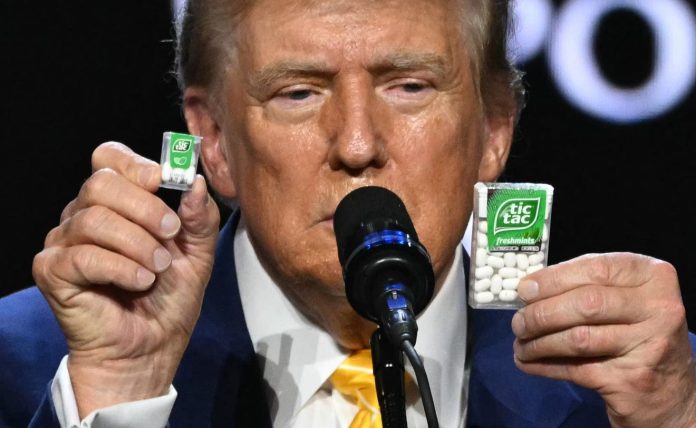Americans’ deep-seated frustration over inflation propelled Donald Trump to victory in the presidential race early this month.
But will Trump’s policies ease inflation? Or could they make it worse?
In the final Forbes/HarrisX national poll released the Monday before the election, 36% of respondents said prices/inflation was their top concern, a larger share than any other issue. And 54% of registered voters viewed Trump as better able to handle the economy, compared to 45% who saw Harris as a better steward, according to a separate Gallup poll.
In other words, voters saw Trump as a “change” candidate who presumably can address high consumer prices, economist Bernard Yaros of Oxford Economics wrote in a note to clients.
Now that Trump is set to take office in January, here’s a look at inflation and where economic forecasters say it’s likely headed:
What is inflation in simple terms?
Inflation is the rise in consumer prices over a specific period. Economists typically focus on the average price changes of a broad basket of goods and services – such as the Labor Department’s consumer price index – that represent what Americans typically buy.
Officials assign weights to various items based on their shares of overall consumer spending. That determines how much impact the cost of each good or service has on the average change in total prices.
What are the differences between inflation and prices?
Inflation is the rate of change in prices, often measured over a year. That’s very different than the actual prices Americans pay at the grocery store checkout or for their car insurance.
Inflation has been gradually slowing since mid-2022 as COVID-19-related product shortages have resolved, consumer demand has cooled following a post-pandemic spending spree and wage growth slows amid a bigger labor supply. The Federal Reserve’s aggressive interest rate hikes also have moderated inflation by raising borrowing costs for consumers and businesses, prompting them to reduce their purchases.
In September, the Fed’s preferred measure of yearly inflation was at 2.1%, down from 7% in March 2022 and just above its 2% goal. A “core” inflation reading that excludes volatile food and energy items was at 2.7%, down from a peak of 5.6%.
Lower-income households “had to allocate a permanently larger share of their consumption toward basic necessities at the expense of discretionary purchases,” Yaros wrote in a note to clients. “As a result, many voters still do not feel better off, even as the rate of change in consumer prices moderated.”
How bad will inflation be in 2025?
Inflation was expected to continue to drift down close to the Fed’s 2% goal by the end of next year as household consumption and employee pay increases continue to slow modestly. But top economists now say Trump’s trade and immigration policies could keep inflation elevated through 2025 or longer.
Trump has threatened to slap 60% tariffs on imports from China and 10% to 20% on shipments from all other countries, far more sweeping levies than those he imposed in his first term in a bid to prod manufacturers to move production to the U.S.
Several top economists believe he’ll stop short of such substantial fees. Goldman Sachs figures he’ll increase tariffs by 20 percentage points on Chinese imports and toss in some additional duties on auto shipments.
Will prices ever come back down?
While consumer prices are now rising more slowly, average consumer prices don’t typically decline. The population and economy keep growing, fueling demand that props up prices. If prices do fall broadly, that’s called deflation and it’s a worrisome sign of a weak economy and it can feed on itself: Consumers put off purchases because they expect costs to keep tumbling, crimping demand and growth, and further pushing down prices.
As pandemic-related supply chain snarls have unwound, prices of some goods that soared early in the health crisis – such as furniture, appliances and used cars – have dropped the past couple of years, though they’re still notably higher than before the pandemic. Oil and gasoline prices also have pulled back on softer global demand and increased production.






